Eight things to know about Mason’s impact on NoVa’s economy
In October, Mason’s Center for Regional Analysis released a study of the university’s impact on the region’s economy. Universities are regularly cited as economic engines for surrounding communities, but just how much value does Mason generate?
1. All in all, Mason produces $1.14 billion in economic activity.
Mason spends hundreds of millions on a number of items to help advance its mission. Everything from student spending to faculty salaries has an impact on the regional economy.
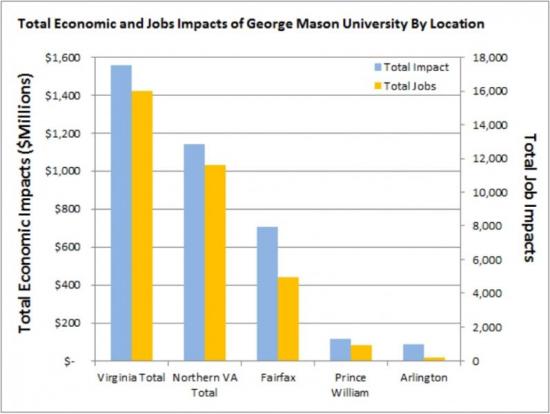 |
| Graph courtesy of Center for Regional Analysis |
2. Mason employs 7,119 full-time equivalent (FTE) employees. 48 percent of which live in Fairfax County.
Most Mason employees reside in Northern Virginia or the Washington Metropolitan Area.
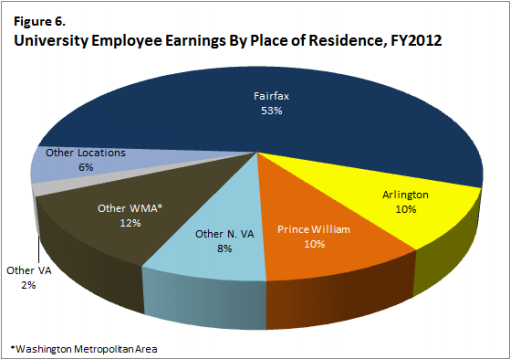 |
| Graph courtesy of Center for Regional Analysis |
In the 2012 fiscal year, Mason paid a $362.3 million in salaries. 81 percent of that income went to Northern Virginia residents, with 53 percent benefiting Fairfax residents.
3. 35 percent of university employees are students.
Of the university’s 9,718 employees, 3,389 are students.
4. About $793 million of Mason’s total spending stays in the Washington Metropolitan Area, with 69 percent of that being spent in Northern Virginia.
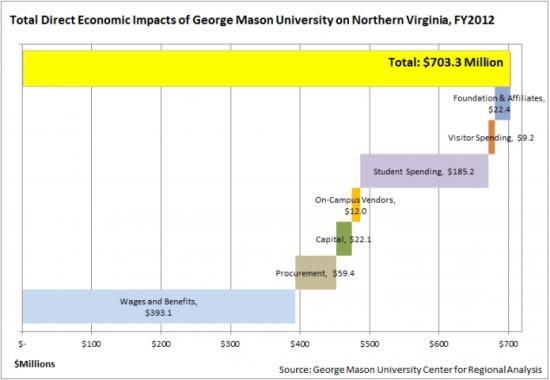 |
| Graph courtesy of Center for Regional Analysis |
5. Just 29 percent of Mason’s procurement spending stays within Northern Virginia.
About half of the university’s expenditures on goods and services benefited communities outside of Northern Virginia and the Washington Metropolitan Area. 36 percent of that spending went to other businesses in Virginia.
Since Goods purchases depend on the locations of manufacturers, and the region’s manufacturing base is small, there are in many cases no local vendors that can provide the goods needed by the university. Additionally, few of purchases related to research— books, scientific equipment, raw materials, etc.—are available within the region, and must be purchased from outside vendors.
The “leakage” of sales to vendors located outside the region creates ongoing opportunities for businesses that are currently located or may want to locate in Northern Virginia, as Mason’s operations require many of these goods and services year after year.
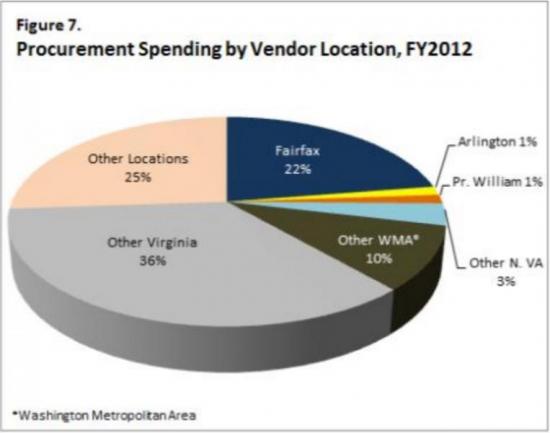 |
| Graph courtesy of Center for Regional Analysis |
6. Full-time students make the biggest contribution to economic activity in the area
"Full-time students who moved to the area specifically to attend Mason have the greatest impacts, as all of their expenditures in the area can be attributed to the university’s presence," read the report.
The study estimates that full-time students at Mason spend an average of $736 per month (or $8,800 per year) on all living expenditures. On-campus students, however, are expected to contribute less to the local economy, because the costs of on-campus food and other amenities are already incorporated into the costs of the university.
7. Students spend most of their money on Retail and Other Goods, which accounted for 39 percent of total student spending in 2011.
Dining and Groceries accounted for 24 percent, while Entertainment accounted for 17 percent.
8. The average full-time student living in off-campus housing pays about $750 per month in rent.
During the 2012 fiscal year, 10,453 full-time students lived in private, off-campus housing. The total impact of this cohort on the housing market is estimated to be $94.1 million.
Bonus Fact: Over 70 percent of Mason students are from the D.C. Metropolitan Area.
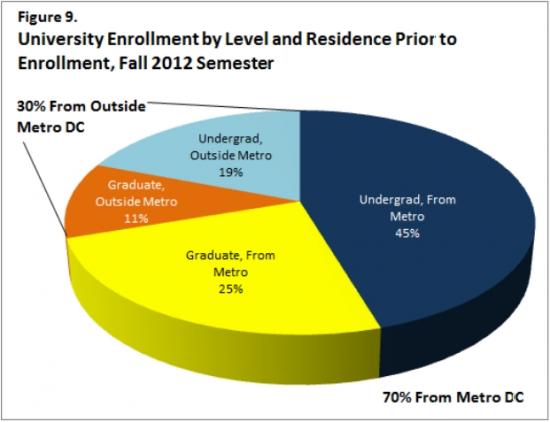 |
| Graph courtesy of Center for Regional Analysis |
